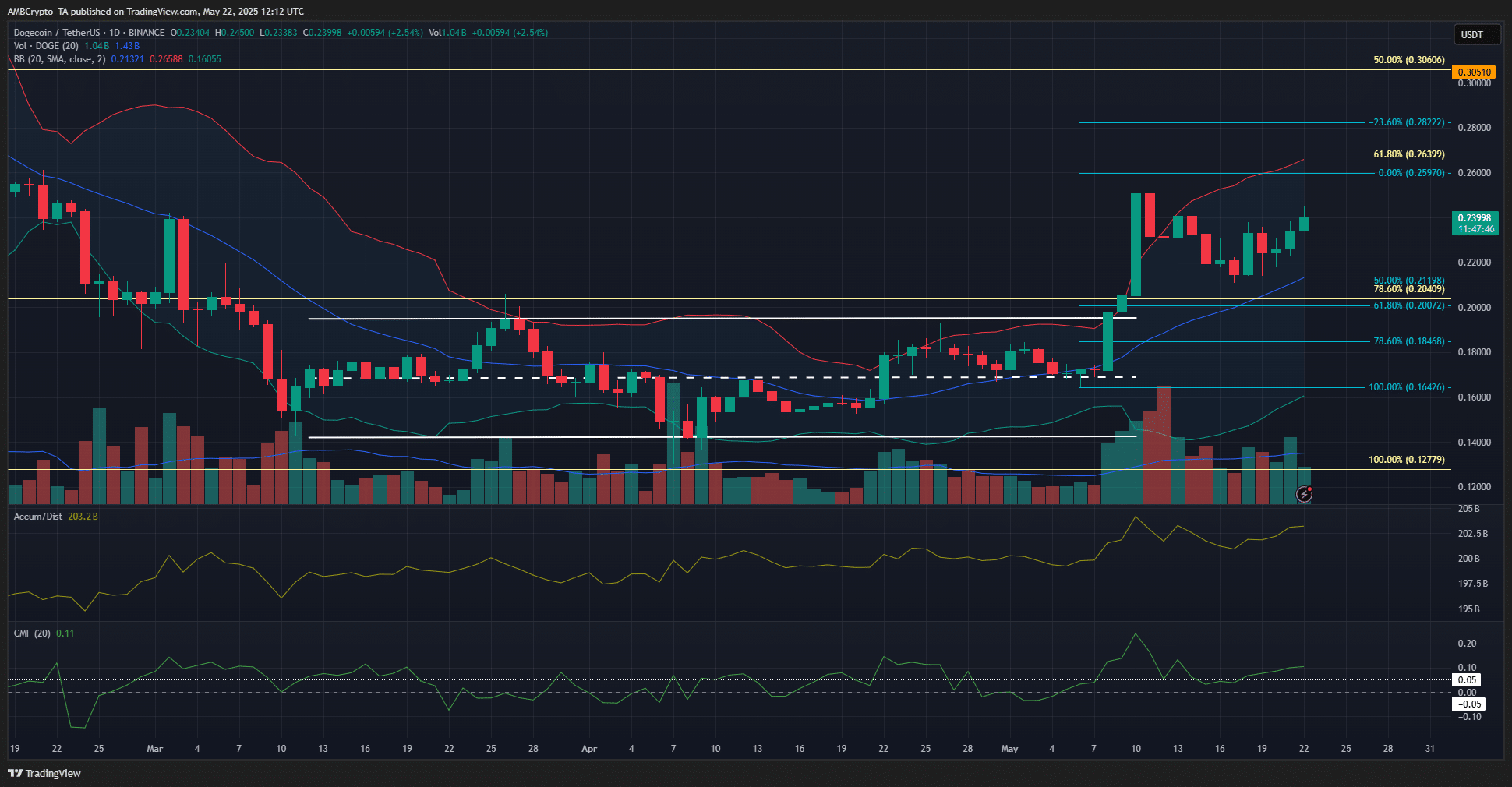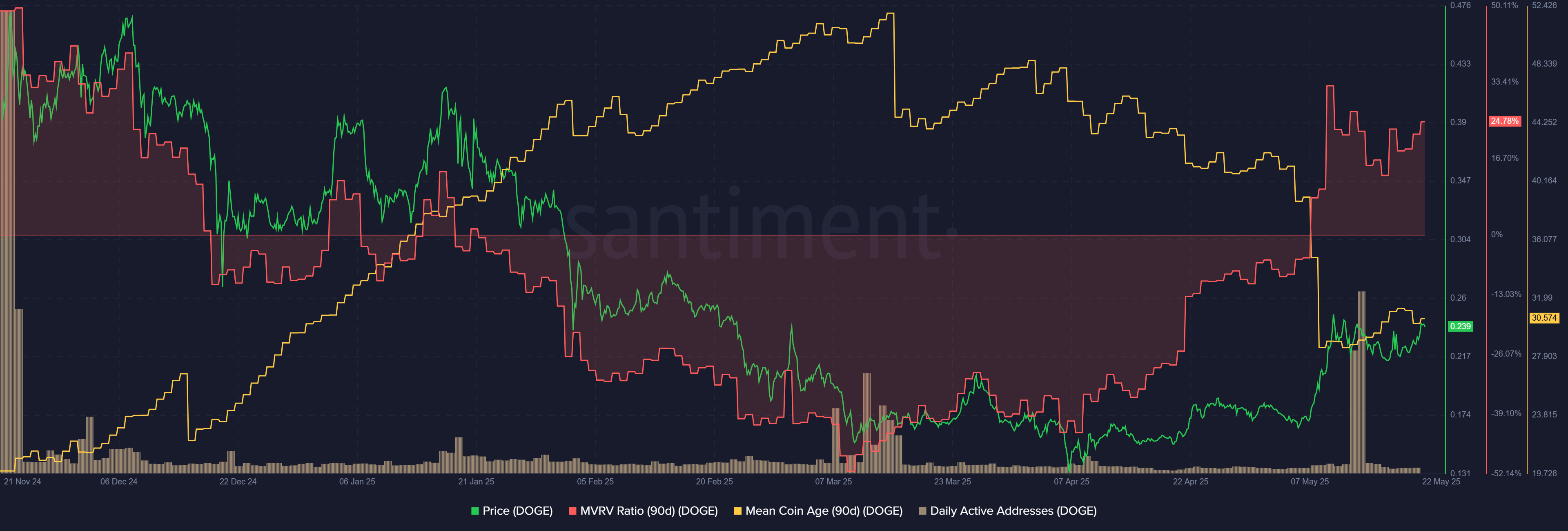Dogecoin’s recent performance has captured investor attention, showcasing a possible trajectory toward $0.3 amid fluctuating market dynamics.
-
After successfully retesting the pivotal $0.212 support level, Dogecoin has shown significant upward momentum.
-
The recent consolidation phase near November’s lows, coupled with an ensuing breakout, suggests a robust long-term uptrend.
Dogecoin [DOGE] recently broke free from a two-month price range, elevating its price to approximately $0.26—not far from the $0.264 resistance level. Following a persistent downtrend since January, this surge aligns with Bitcoin’s [BTC] revival over the past six weeks, contributing positively to the altcoin market’s sentiment.
While Bitcoin remains a market leader, analysts suggest that an altseason is yet to materialize. However, optimism surrounding Dogecoin’s continued upward trajectory is palpable among traders and investors.
Dogecoin is ready to rally to $0.3 next

Source: DOGE/USDT on TradingView
On May 10, Dogecoin’s price surpassed the upper Bollinger Band, although it was subsequently forced to retrace. Fibonacci retracement levels indicated a test of the 50% mark, with momentum returning at press time.
The breakout beyond the established range has resulted in a bullish market structure on the one-day chart. Consistent buying pressure is evidenced by volume indicators, showcasing a constructive trend.
The Accumulation/Distribution (A/D) indicator has shown a steady increase over the last two months, suggesting that buying volume has outstripped selling. Additionally, the Chaikin Money Flow (CMF) is positioned above +0.05, further indicating positive capital inflows into the Dogecoin market.
A potential move beyond the upper Bollinger Band may prompt a pullback; however, the 20-day moving average serves as a dynamic support level. Long-term Fibonacci levels indicate that the next resistance target stands at $0.306.

Source: Santiment
Despite robust buying activity in recent weeks, the mean coin age metric reveals a widening distribution across the Dogecoin network during the May rally. This decline in mean coin age suggests heightened transaction volumes among DOGE holders, likely influenced by profit-taking.
The uptick in daily active addresses splashed across the network was noteworthy, peaking on May 14. The 90-day Market Value to Realized Value (MVRV) ratio indicates that those who acquired DOGE in the last three months are enjoying a reasonable profit margin. However, this environment also signals that profit-taking by short-term holders may present a challenge to Dogecoin’s ongoing rally.
Conclusion
In summary, while Dogecoin shows promising signs for a potential rally towards $0.3, on-chain metrics suggest caution is warranted. The dynamic interplay between buying pressure and short-term profit-taking could shape Dogecoin’s immediate future. Investors are encouraged to monitor these developments carefully to navigate the upcoming market conditions effectively.
